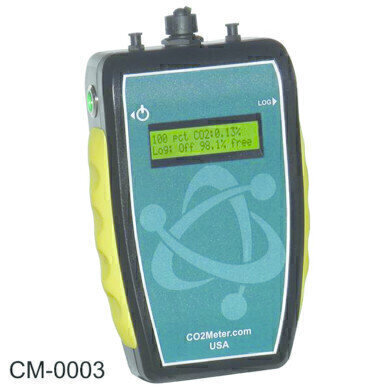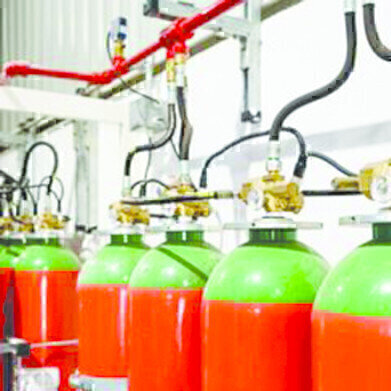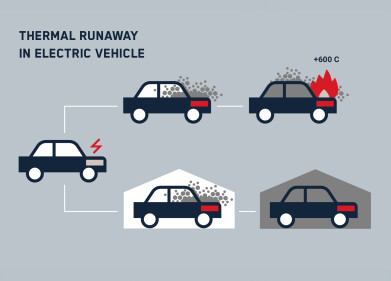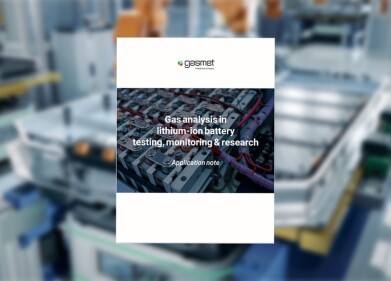Health & Safety
Ultrafast CO2 sensor used to upgrade datalogger for quicker results
Nov 06 2018
Carbon dioxide (CO2) is an ideal fire suppressor for many applications, because apart from actual fire damage, there is no clean-up or residue associated with a CO2 system - unlike with foaming agents or water. When a fire starts, high-pressure CO2 is released into the area it is protecting. Carbon dioxide gas displaces the oxygen until there is no longer enough required for combustion. The fire can then be controlled or extinguished.
GSS
A common application is the protection of switch rooms or control panels, and other confined space environments which house electrical components, computer or process equipment such as server farms. Other common uses include gas turbine enclosures, power generation stations, and flammable liquid storage areas.
GSS fire suppressant
However, there are two key challenges when using CO2. First, the cylinders of CO2 used in these Fire Suppression Systems could leak. Therefore, the areas where they are stored need to be monitored. Second, when such a system has been deployed, the atmosphere must be checked to ensure that the CO2 has dispersed to safe levels for re-entry.
CO2Meter has developed a data logger, the CM-0003, that is capable of measuring up to 100% CO2 concentrations. The portable device is ideally suited for leak detection testing in fire extinguisher systems, and can detect even a slight change in the level of CO2. By attaching a length of tubing, the unit can be run in real-time along pipe connections and valves to pinpoint leaks - even in hard-to-reach places.
This unit is also used to create a three-dimensional map of the CO2 levels in a particular space, by sampling from both horizontal and vertical locations. This helps determine when it is safe for emergency services to enter an area after a CO2 extinguisher has been used. "Our original design used a GSS ExplorIR®-W CO2 sensor, as the low power requirements of their LED-based technology enabled us to create a portable, battery-powered product that could go weeks between recharges," explained Irene Hicks, CEO of CO2Meter. "It is also highly accurate right up to 100% CO2 concentrations, which is vital for a sensor in safety applications. However, an almost instant CO2 reading is needed in some situations, so in future we will be usingGSS’ high speed SprintIR®-6S sensor in our datalogger. This sensor takes 20 readings per second, so it's ideal for recording fluctuating CO2 levels, particularly in fast changing environments. The beauty of the SprintIR-6S is that it's still low power enough to be used in our portable data logger, so you can have high speed and low power sensing effectively combined."
A customer of the CM-0003, who uses them for full discharge tests of CO2 fire suppression systems, said, "The meters are small enough to take as carry-on luggage, which I find very useful. I typically use three or four meters simultaneously, with test times ranging from 30 to 60 minutes each. To date, I've used these CM-0003 meters for testing well over 200 sites."
GSS CO2meter
Rachael Yates, Marketing Manager at GSS, added, "We have a very close working relationship with CO2Meter who use a variety of our sensors in their products. The solid-state design of our LED-based sensors makes them particularly rugged so that they can withstand the rough handling that portable devices are subjected to. We are delighted to be working with them as they integrate our latest designs of ultra-fast reacting sensors into their product range. In particular, our unique, low power, 100% CO2 sensors are opening new market opportunities for them to create solutions for."
Most CO2 sensors work by measuring how much light is absorbed by CO2 molecules in the 4.2 to 4.4 microns range as it passes through the sample gas, which is called Non-Dispersive Infra Red (NDIR) absorption. The amount of absorption indicates how much CO2 is present. GSS developed proprietary LEDs that are specifically tuned to emit at these wavelengths. The LEDs use very little power and turn on almost instantly, enabling sensor readings to be made in a few seconds. As a result, GSS has pioneered the development of CO2 sensors that can be powered by batteries for long periods of up to ten years. Competitor sensors use IR sources that require significantly more power per measurement and also take much longer to reach a stable condition for a measurement, resulting in the need for mains power.
Digital Edition
AET 28.2 April/May 2024
May 2024
Business News - Teledyne Marine expands with the acquisition of Valeport - Signal partners with gas analysis experts in Korea Air Monitoring - Continuous Fine Particulate Emission Monitor...
View all digital editions
Events
Jul 30 2024 Jakarta, Indonesia
China Energy Summit & Exhibition
Jul 31 2024 Beijing, China
2024 Beijing International Coal & Mining Exhibition
Aug 07 2024 Beijing, China
IWA World Water Congress & Exhibition
Aug 11 2024 Toronto, Canada
Aug 25 2024 Stockholm, Sweden and online











.jpg)








